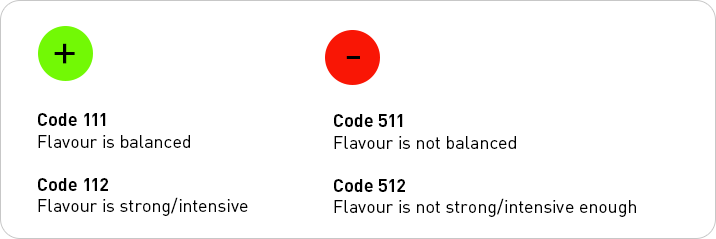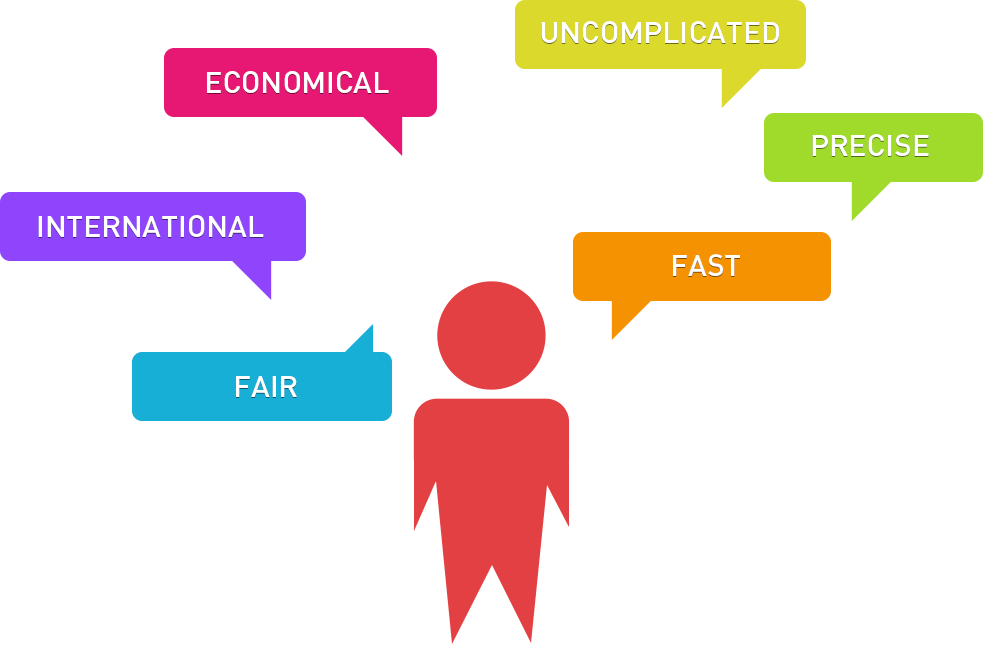Coding Services
IN GOOD HANDS
Many years of study experience
Projects are handled by well-trained employees, who can generally demonstrate long-term studiy experience, also with large numbers of interviews. We always work on a double-checking principle: One coder codes, another checks all the codings.
With the right tools
The coding software CIScode, developed by IfaD, contains all features for the efficient processing of even the most complex multi-language surveys – simultaneously and with centrally-administered code plans. Thus, every alteration in a code plan is immediately available to all coders working on the project. This obviates the need for subsequent alignment of the individual country codings in a global project; the consistency of coding across all countries can be assured.
AUTOMATED CODING
Valuable support
An innovation by IfaD: Our coding software CIScode has an automated code allocation mode that has proved its worth over several years. In this mode, responses to open-ended questions are interrogated for contents that are stored in the code plan, and when an agreement is found the appropriate code is allocated. Because the words in the response are often written in different ways, CIScode works with synonyms for each search term so that a variety of forms or spellings can be stored for each code point. The synonyms are completely independent of language; Latin and non-Latin scripts can be combined at will.
Quicker and better
The integrated logic with exclusion lists can also handle the automated pre-coding of longer statements, which can often significantly minimise the time required for the coding of large sample sizes. A further advantage: Particularly important statements that are captured by the automated pre-coding can no longer be accidentally overlooked. Extensive filter and control functions ensure the quality of the final coding.
BRAND CODING
Ready in an instant
Especially for very short responses with a low level of variation, such as for example brand questions (also products, countries, slogans, etc.), coding with automated support can be carried out quickly, reliably and error-free in just a few steps. Large sample sizes can thus be processed in a short time – also in multiple languages simultaneously. This approach offers an enormous time advantage, and the coded data becomes available for further analysis in a very short time.
TIME BENEFIT
Consistently faster
Basically, coding must always be quick, so that the data from the open-ended responses can also be incorporated into the results presentation without great time pressure. Therefore we consistently orient our work processes to the need for speed. From commencing the coding already during the ongoing fieldwork, through parallel processing by multiple coders simultaneously, to the transformation of less meaningful code points without needing any alterations in existing code allocations, we optimise every step in order to reduce the time requirement. Only one point never varies: With our coding we deliver optimum quality to you every time – no question about it.
CODE PLANS
Meaningful analysis guaranteed
Code plans are at the heart of every coding project. They contain, in compressed form, the contents of the verbatim responses to open-ended questions together with a unique numerical code.
We have long experience in the production of code plans in a wide range of different sectors, e.g. automotive, ad tests, product use tests, employee surveys.
Our code plans, which we produce in close collaboration with you, provide you with meaningful analysis of the content of open-ended responses. Code plans can be developed with multiple structured over-code levels to whatever depth is desired in the individual case, thus making the analysis considerably more efficient.
For better comparability in code plan development, we follow the correspondence principle in our code plans. This means that we allocate the positive and negative statements to the respectively corresponding codes and code texts.

We also possess an extensive code plan library with standard code plans that can be individually adapted to the relevant project.
CODE GROUPS
Compactly combined
A further innovative feature of CIScode is code groups. Only with IfaD can such large volumes of very heterogeneous statements be processed in such a clear and easy way.
When designing code plans, one is often confronted with the same problem. The interviewees’ responses are so differentiated that the code plan – if it is to take all relevant aspects into account – is very long and unclear. In such cases it is advantageous to be able to graduate the code allocations with separate code plans specific to the respective categories.
CIScode offers this possibility with the aid of code groups – combined codes with compact partial code plans. Easy to use, quick to code, clear to analyse. This feature facilitates the coding of complex responses to an extremely meaningful depth of detail that was hitherto impossible. At the same time, accidental coding errors are effectively excluded, because in the sequential code allocation only the really relevant code points are available.
Divide and code
This is how it works: A code plan is divided into practical partial code plans based on the relevant topics. For example, the first partial code plan codes the product that is being rated. Depending on the product, the attributes that are to be rated are listed in the second partial code plan. The coding of the ratings of the attributes takes place with the aid of the third partial code plan. In a fourth partial code plan, the intensity of the rating is captured. This is how it might look in practice:

AND BY THE WAY…
Naturally we also offer anonymisation and spell checking of open-ended responses.
Direct contact for enquiries:
Kristin Peters
+49 1522 5395 228
[email protected]




